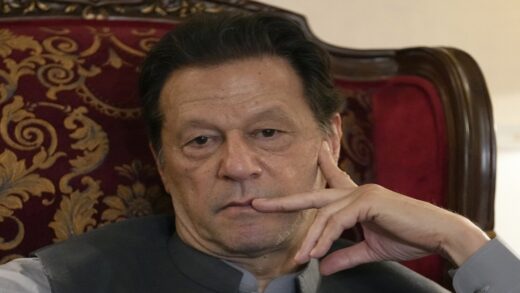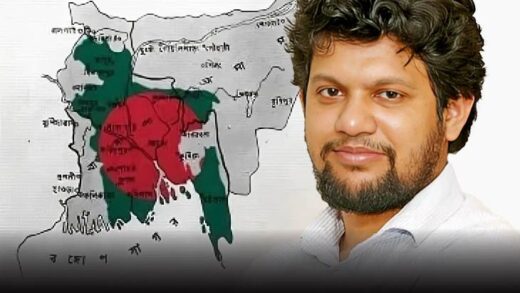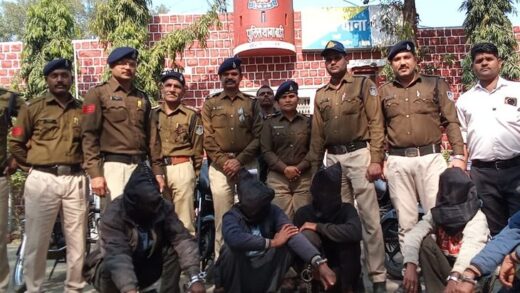DUISBURG, Germany, Dec 19 (IPS) – Donald Trump, president-elect of the USA, wants to end the Ukraine war within a day, as he has emphasized several times, but without saying how. Despite the brutal clashes on the ground in Ukraine, do negotiations now have a chance? Are we near to a “ripe moment” for negotiations?
The war continues unabated. There is no end in sight. Can we hope that Donald Trump will find a personal connection to Vladimir Putin to end this war? The phone call on 15 November between German Chancellor Olaf Scholz and Putin – the first telephone contact in two years – was sobering because Putin only reaffirmed his already known positions: He is ready for negotiations, but only on his terms. In other words, recognition of the “new territorial realities” and “consideration of Russian security interests”. In concrete terms, this would mean the handover of the four regions in eastern Ukraine, parts of which are occupied by Russia, and Crimea. Scholz called for negotiations with the aim of a “just and lasting peace”, which is primarily aimed at the withdrawal of Russian troops.
The Russian attack and Ukrainian defence have turned into a war of exhaustion, with current military advantages for Russia. The Russian strategy can be described as an escalation with the hope of a military victory. So far, Ukraine and its supporters have reacted with intense resistance. Western support has escalated with the delivery of more effective weapons and belief that victory is still possible. But increasingly a certain fatigue can be felt among them and Trump has made it clear that the massive support will no longer come from the USA.
What is the consequence for the Ukraine war, and what is the alternative to this battle with more and more deaths? Negotiations now? Is there a chance for peace without military victory? But neither side is ready yet for serious negotiations. Ukrainian President Volodymir Zelensky was not happy about Scholz’s initiative and spoke of a policy of appeasement, also because the call counteracts Putin’s international isolation.
The American political scientist William Zartman speaks of the necessary “ripeness” of a conflict as a prerequisite for the success of negotiations. The concept of “ripe moments” centres, according to Zartman, on the adversaries’ perceptions of “hurting stalemates”. The willingness to negotiate increases when both sides realize that a military victory is not possible and that the military potential, i.e. soldiers and weapons, is no longer sufficient. The depressing conclusion is that today, even after almost 1,000 days of war, this situation does not exist in Russia or Ukraine. But the increasing logistical bottlenecks on both sides, the irreplaceable, irrecoverable and permanent losses are perhaps an indication that the conflict is in a process of maturing for negotiations. Even Russia, with its present territorial advances, seems not able to replace its casualties. The arrival of about 10,000 North Korean troops in Russia raises the question of whether the Kremlin can make up for its enormous losses.
Different scenarios
Four scenarios are conceivable, all of which are far from an ideal solution.
First, it is not inconceivable that the war, which has now lasted almost three years, with all its destruction and loss of life, will continue for another few years without an end in sight.
Second, Donald Trump could actually strike a deal with Vladimir Putin, presumably at the expense of Ukraine. Trump believes in deals. Russia would receive the parts of Ukraine it occupies, a demilitarized zone would be established along this border within Ukraine, Ukraine would receive security guarantees (from NATO, the United Nations, or a grouping of neutral states), and a peace treaty would be postponed until later. And “later” could mean decades without a peace treaty.
Third, one side could win militarily. Unlikely, but not completely out of the question. The Kremlin firmly believes in this possibility and is assured by its territorial gains in recent weeks. At the same time, the Russian leadership underestimated Ukraine’s will to resist at the beginning of the full invasion of Ukraine in February 2022 and then had to significantly limit its war goals, the overthrow of the government in Kyiv and the integration of Ukraine into the Russian Federation.
The fourth scenario, a ceasefire and a frozen conflict. There are a number of conflicts that are in this state of having no real solution. In recent years, the situation in Korea has been referred to several times in order to consider a similar solution to the Ukraine war. This scenario is perhaps the most likely.
Ceasefire and a frozen conflict: The Korean solution
Of course, every conflict is different, and the respective conditions also differ. Nevertheless, there might be both conflict patterns and patterns of conflict resolution that could provide clues to Ukraine’s future. Sergey Radchenko, a historian at the Johns Hopkins School of Advanced International Studies in the US, pointed out parallels to the Korean War in an op-ed in the New York Times after a year of the Ukraine war. More than 70 years ago, in July 1953, an armistice agreement and the establishment of a demilitarized zone led to the freezing of this war and the division of Korea into two separate states.
Recently, Joseph S. Nye, one of the most influential political scientists in the USA, pointed to a “Korean solution” in an article entitled “What Would Victory in Ukraine Look Like?”. He writes: “If Ukraine defines victory as the return of all land that Russia has occupied since 2014, victory is not in sight. But if it aims to maintain its independence as a prosperous democracy linked to Europe, while reserving its right to the ultimate return of its territory, victory remains possible.” The Korean War also swayed back and forth from 1950 to 1953. Like what is happening now in Ukraine, neither the north nor the south, nor their respective supporters, were prepared to end the war quickly because of hopes of a military victory. The Korean armistice agreement of July 1953 stipulated the status quo ante with the division of the country at the 38th parallel. Korea is still a divided country, and the conflict is a frozen one. A peace treaty was never concluded and the so-called demilitarized zone along the border between the two states is one of the most militarized borders in the world. A permanent ceasefire was reached without a peace agreement.
Proponents of a “Korean solution” point out that the destruction and loss of life has ended, and that South Korea has now become a resilient democracy and emerging economic power. Democratic development and integration in Western Europe could then follow in the same way in Ukraine.
Critics of such a solution describe the Korean ceasefire as a “non-solution”. The Swiss historian Roland Popp, who researches at the Military Academy of the University ETH Zurich, writes that this Korean solution “also covers four decades of one of the most brutal dictatorships in the world, massacres of tens of thousands of civilians … or the assassination of the president by the director of the South Korean CIA in 1979.” And he points to the immense costs and uncertainties for Western Europe.
In 1953, a Neutral Nations Supervisory Commission was set up in Korea. In the more than seven decades of the existence of the armistice agreement there have been numerous military skirmishes on the border. North Korea’s nuclear weapons program is a threat, just as the North calls the South Korean military with its ally the United States a threat. Precisely for this reason, is it remarkable that this agreement has prevented a new war with heavy losses for more than seven decades. The consequences of a Korean solution for the situation in Europe would probably also mean, as in the case of the Korean peninsula, arms races as during the early days of the Cold War
Neutral states could also play an important role in ending the Ukraine war: for example, India, South Africa, Brazil or Switzerland. If neither side makes significant gains in Ukraine, a ceasefire would not be impossible. Presumably, the Ukrainians would not regain all the territories occupied by Russia. Russia could interpret the abandonment of its actual goal as a partial victory in order to save face. The conflict would be frozen. Not a nice result, but still the end of the war. A frozen conflict is better than a hot war. But the history of frozen wars shows that they can turn into hot wars again at any time. In the case of Ukraine, the imposition of an unfair solution could possibly result in Ukrainian partisan resistance.
A possible fifth scenario, a peace agreement that is binding under international law, with an agreement between Russia and Ukraine, currently seems to be completely out of the question.
Related articles by this author:
– Agonizing over Europe’s Defence: Some Narratives are Getting Ahead of the Facts
– Boots on the ground
– Ten Take-Aways on Russia’s War and Five Ideas for the Future of Ukraine and BeyondHerbert Wulf is a Professor of International Relations and former Director of the Bonn International Center for Conflict Studies (BICC). He is presently a Senior Fellow at BICC, an Adjunct Senior Researcher at the Institute for Development and Peace, University of Duisburg/Essen, Germany, and a Research Affiliate at the National Centre for Peace and Conflict Studies, University of Otago, New Zealand. He serves on the Scientific Council of SIPRI.
IPS UN Bureau
Follow @IPSNewsUNBureau
Follow IPS News UN Bureau on Instagram
© Inter Press Service (2024) — All Rights ReservedOriginal source: Inter Press Service
Source link
#Time #Ripe #Ukraine #War
















